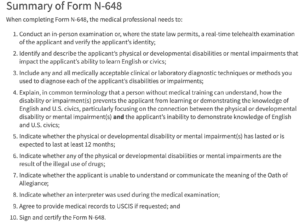TTAB Sustains WIRED Magazine’s § 2(d) Objection to Application to Register “WIRED” As A Mark for Clothing, But Not for Fitness Services | Akerman LLP – Marks, Works & Secrets
The Trademark Trial and Appeal Board (“TTAB”) sustained the objection of the publisher of the tech magazine WIRED (“Opposer”) to an Applicant’s (“Applicant”) bid to register the term “WIRED” for clothing but rejected its objection for fitness-related services.
The Applicant sought registration for WIRED marks for fitness-related services and athletic clothing. The Opposer opposed the registration under § 2(d) of the Trademark Act, 15 U.S.C. § 1052(d), on the ground that Applicant’s marks resemble Opposer’s WIRED marks for magazines and, thus, are likely to cause confusion. The Opposer relied on its 17 registrations for WIRED and WIRED-formative marks for magazines relating to the digital revolution, information services, and retail store services.
The TTAB applied the DuPont factors to determine the likelihood of confusion between the Applicant’s and the Opposer’s marks. First, the TTAB noted that WIRED is a suggestive mark and, as such, it is inherently distinctive and entitled to a commensurate scope of protection.
Second, the TTAB considered the commercial strength of the Opposer’s WIRED marks. Based on the Opposer’s sales revenue, readership data, YouTube subscriber information, and media references, the TTAB found that WIRED marks fall on the very strong side of the spectrum “in connection with magazines covering the digital revolution, culture, lifestyle, and technology, as well as for providing information about business, politics, technology, electronics, science, celebrities, entertainment, and pop culture via the Internet.” The TTAB, thus, concluded that the Opposer’s marks are entitled to “a broader scope of protection than is normally accorded to an inherently distinctive suggestive mark because of their commercial strength.”
Then, TTAB turned to the DuPont factor “focusing on the similarity or dissimilarity of the marks in their entireties as to appearance, sound, connotation, and commercial impression.” the TTAB reviewed the following marks:
Opposer’s Marks
WIRED
WIRED AUTOCOMPLETE INTERVIEW
WIRED MASTERMINDS
Applicant’s Marks
WIRED
WIRED.FIT
Unsurprisingly, the TTAB concluded that the marks at issue are dominated by the word WIRED. The TTAB further found that the marks are identical or similar in appearance and sound. The TTAB also found that although the meanings and commercial impressions of the marks differ, “they share the similarity of ‘connection,’ either a connection to the Internet or an electrical connection.” Thus, the TTAB concluded that the similarities of the marks outweigh the dissimilarities.
The TTAB then considered the nature of the goods and services involved. Regarding apparel, the TTAB concluded that the Applicant’s clothing and Opposer’s retail store services featuring apparel are inherently related and that there are no restrictions on their trade channels or classes of purchasers. Accordingly, the TTAB concluded that the Applicant’s mark WIRED for clothing is likely to cause confusion with the Opposer’s WIRED and design mark for the retail store and online retail store services featuring clothing.
However, for fitness services, the TTAB rejected the Opposer’s argument that “any subject covered by [its] magazine or online services are potentially related goods or services.” the TTAB reasoned that “[i]f that [was] the case, having a famous mark would entitle the owner to a right in gross, and that is against the principles of trademark law.” The TTAB further explained that although the Opposer’s WIRED marks are very strong, and the Applicant’s marks are similar to the Opposer’s marks, the differences in the goods and services are significant countervailing factors. As a result, the TTAB sustained Opposer’s § 2(d) claim regarding clothing but dismissed the claims regarding her fitness services.
As to the dilution claim, the TTAB explained that “[a] threshold question in a federal dilution claim is whether the plaintiff’s mark is ‘famous,’” and “a threshold response in the range of 75% of the general consuming public is necessary to prove fame for purposes of dilution.” As the Opposer’s evidence showed a 45% awareness of the WIRED marks, the TTAB found that they are not famous enough for dilution purposes.
This decision provides valuable insight into the TTAB’s application of the DuPont factors to identical marks, especially where the opposer’s marks are strong.








